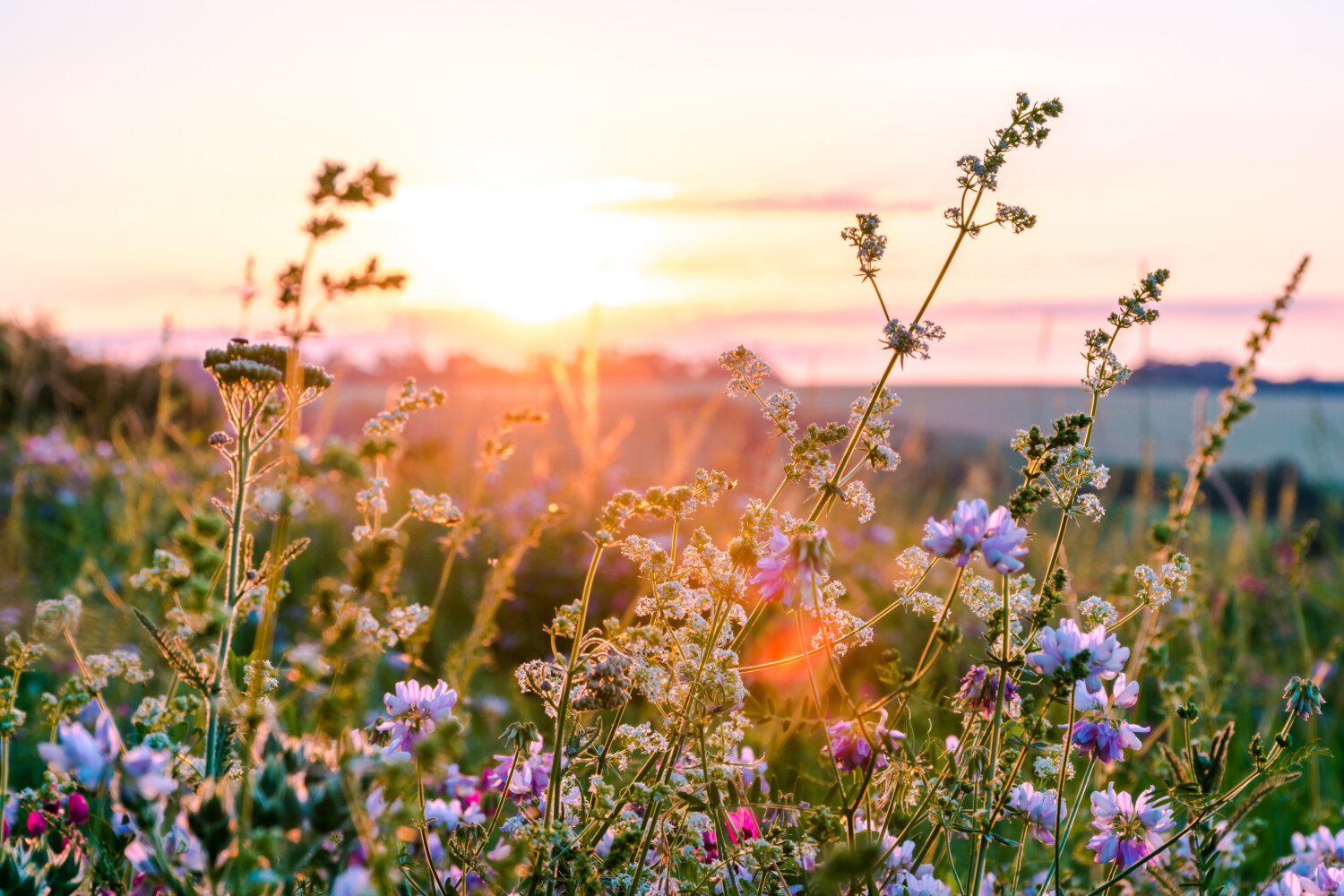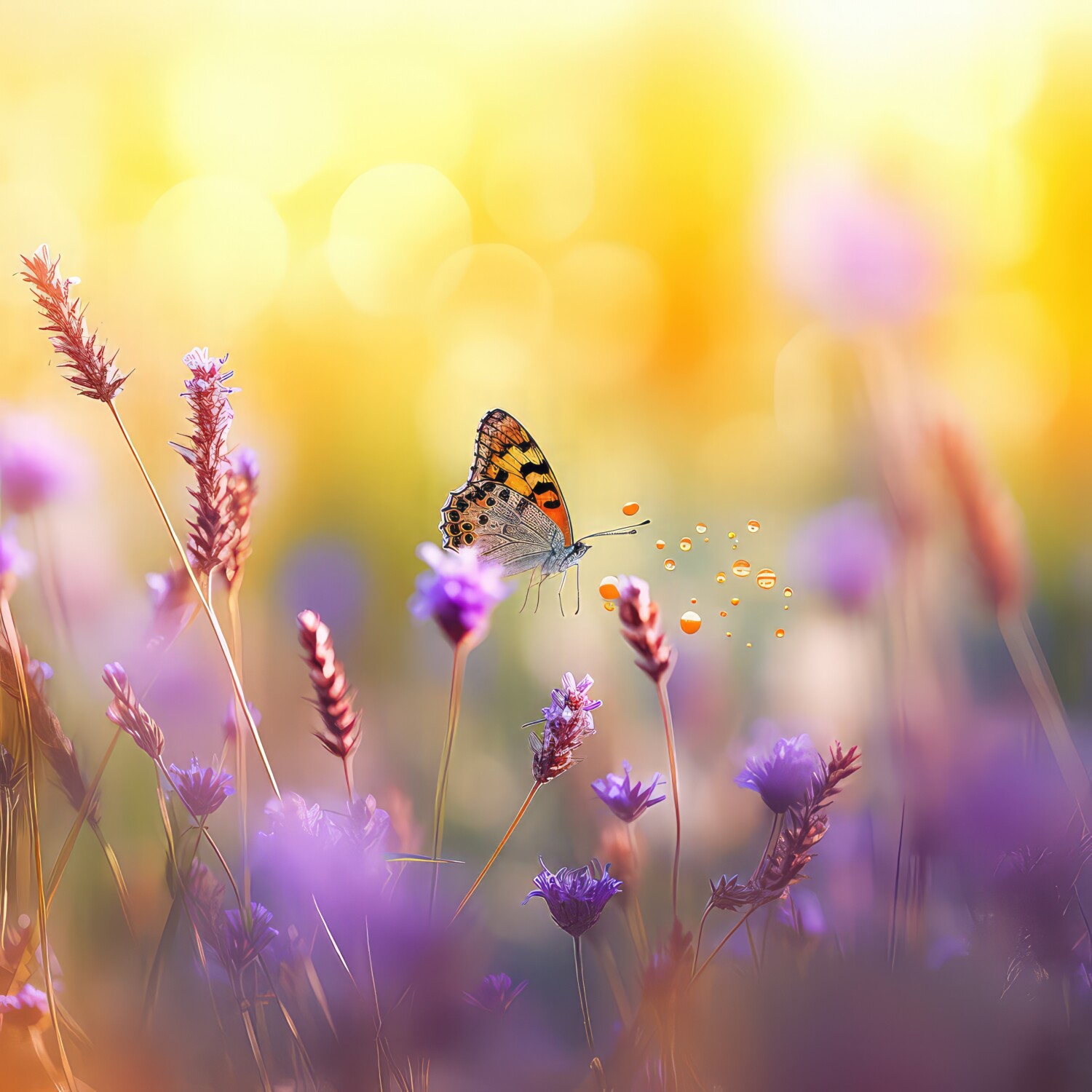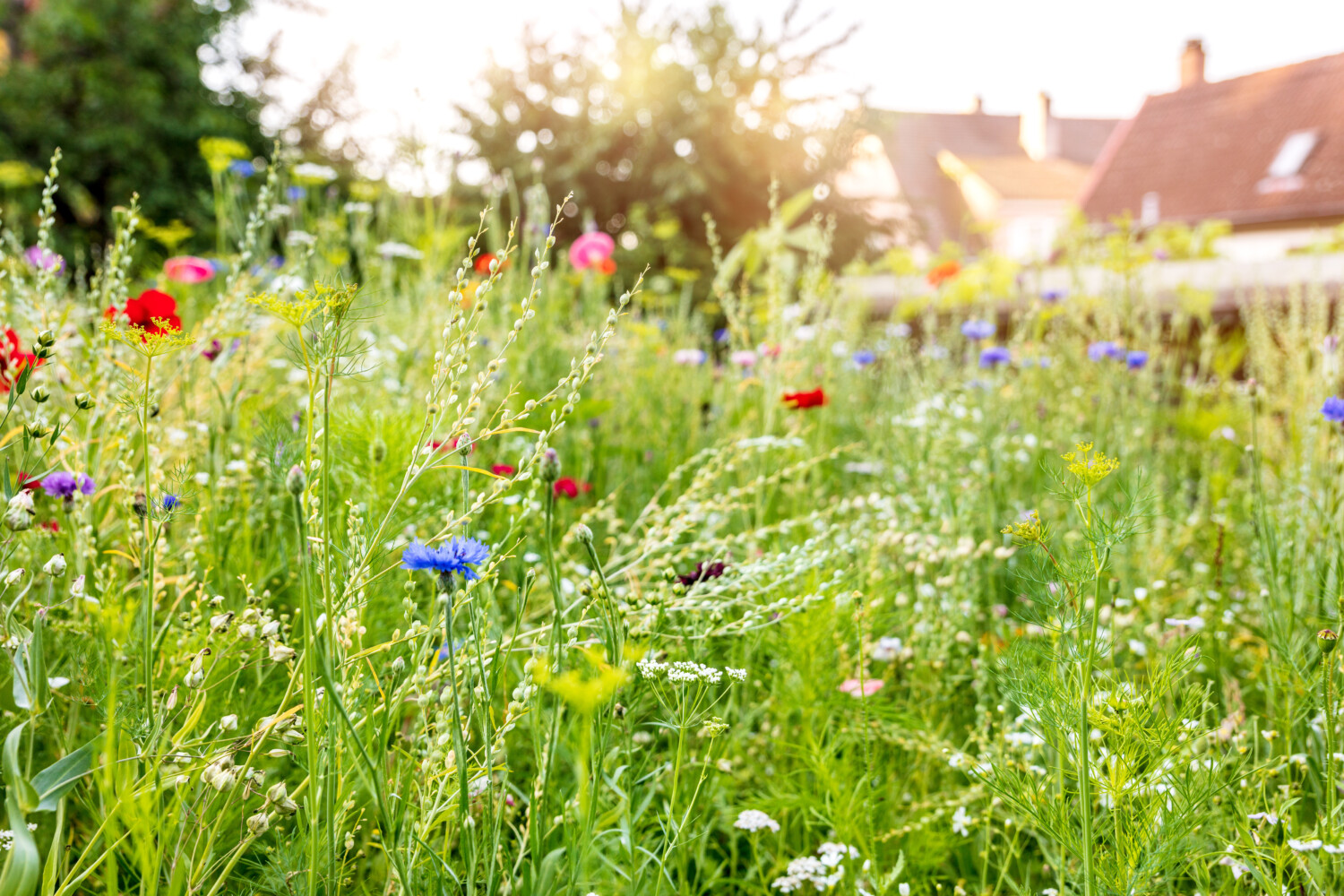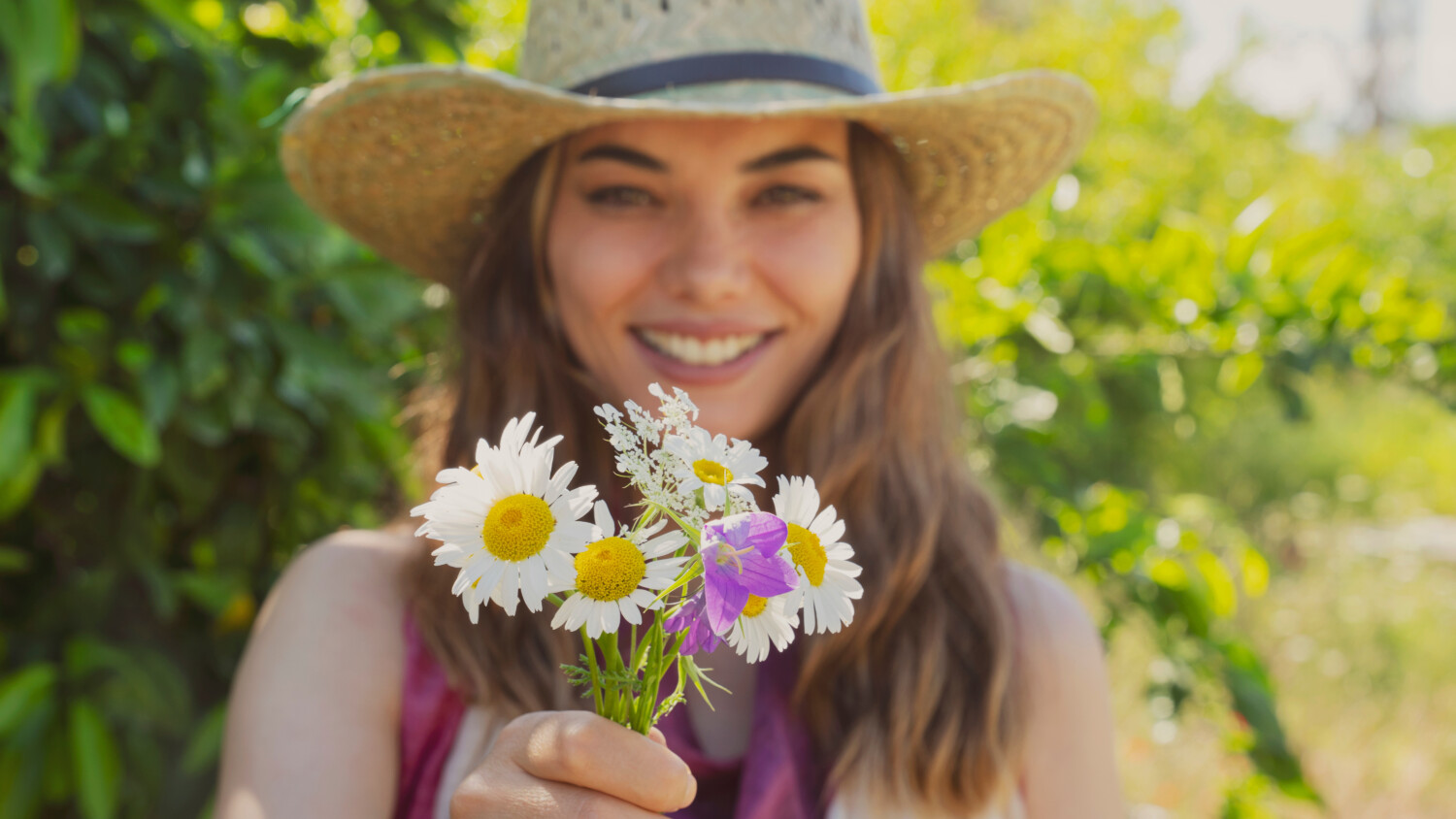If you have a bare patch in your yard that needs some color and life — and bees and butterflies to boot — you may want to consider planting a wildflower garden. Wildflowers come in a range of colors and sizes, and add textural and visual appeal to any green space.
For those who don’t consider themselves to be expert gardeners, wildflowers can be a low-maintenance alternative to other flower varieties. However, while they are easier to care for than other flowers, they do require some legwork to get up and running.
Before you start your new garden, here’s what you need to know about wildflowers and how to plant and care for them.
What Are Wildflowers?
As the name suggests, wildflowers are flowers that can be found naturally in the wild. Unlike commercial flowers, wildflowers have not been cultivated or bred to have certain characteristics. In fact, all commercial flower varieties originate from wildflowers, and only after years of breeding and genetic manipulation have become what we cultivate in home gardens today.
Wildflowers can be found in woodlands, prairies and wetlands, and some states have even designated special refuges and reserves where you can observe them. They tend to be native species, ideally suited for the ecosystems where they live, and have been around as long as 100 million years, according to some fossil records.

MORE: 5 ways to attract dragonflies to your yard to help eliminate mosquitoes
In the U.S., the best time to see wildflowers can vary widely from state to state. In climates that are warmer year-round, you may find them blooming all year. In those that have cooler winters, wildflowers will typically surface in the springtime — and even then bloom time may still vary depending on the variety.
Because by definition wildflowers are native to their regions, they have co-evolved with other local plant species, allowing a symbiotic relationship between other native, non-invasive plants and animals such as pollinators.
Benefits Of Planting a Wildflower Garden
While many may consider planting a wildflower garden solely for visual appeal, the truth is that wildflowers serve a much more altruistic purpose. The World Wildlife Federation shares that one healthy wildflower field may contain a minimum of 100 different types of wildflowers, which can attract insects — then birds who prey on those insects — as well as other mammals that contribute to the overall biodiversity of an area.
Wildflowers are also a key food source for pollinators such as bees and butterflies, which are critical to our food supply chain. As bee populations have declined considerably over the years, wildflower gardens can become a safe haven for them to feed, which assists in boosting their numbers.
While a backyard wildflower garden is a considerably smaller scale, it can still attract pollinators and may even help keep garden pests at bay.

MORE: Did you know hostas are edible? Here’s how to prepare them
Planting wildflowers, which have extensive root systems, in a rain garden can also help reduce flooding and erosion in your yard while improving water quality.
On top of that, they require less water and fertilizer, are less likely to get disease and are more tolerant of pests. Experts at The Spruce say that because local wildflowers are native to your region, they’re already adapted to the soil and other growing conditions, and can thrive with minimal intervention.
Make Sure to Choose A Diverse Variety of Plants
Clay Bolt, a natural history photographer and communications lead for World Wildlife Fund’s Northern Great Plains program, explained to National Geographic how important it is to make sure you are planting a wide variety of different plants in your garden.
“The greater diversity of plants that you have, the more robust the habitat is for a variety of pollinators and wildlife,” he said. “All of these plants are also connected through fungi in the soil. Their roots create a network where they share resources, strengthening one another.”
Furthermore, if you plant a wider variety of flowers, they’ll bloom at different times over a couple of months, extending your wildflower season considerably.
One of the first things to consider before selecting your wildflower seeds is whether or not the flowers are native to your region. If they are not native, they may have a harder time thriving, and may even be considered an invasive species. As with anything you plant in your garden, know your USDA Hardiness zone before planting to make sure the plants are a good match for your area.
To find which varieties of flowers work best near you, you can contact local extension experts or nonprofit organizations.
MORE: Everything you need to know about caring for and growing lilacs
Which Wildflowers Will Attract Pollinators?
If one of your goals in planting a wildflower garden is to attract specific pollinators, it’ll help to know which plants work best for which pollinators. If you want to attract butterflies, some examples of flowers to plant include black-eyed Susans, cornflower and yarrow. If you want to attract hummingbirds, you can plant zinnia, nasturtium and cleome. And lastly, if you want to attract beneficial insects, be sure to add fennel, bishop’s weed and aromatic aster to your list.

How To Plant and Care For Wildflowers
To thrive, wildflowers prefer to be planted in an area where they can receive full to partial sun. If you must plant in an area that doesn’t receive enough light, some flowers can tolerate more shade than others, such as black-eyed Susans, common foxglove and Shasta daisies. Otherwise, you’ll need to make sure your flowers are getting between six to eight hours of sun a day.
It’s best to plant your wildflower garden in the spring; this will ensure they have enough time to set. If you decide to plant later, they’ll need a minimum of 10 weeks before the first frost to self-sow.
Before you plant your seeds, you’ll want to make sure that your garden is free of prior vegetation to create the best growing conditions. Next, you’ll want to till your soil at approximately 3 inches deep, and then rake and level out the soil.
Now it’s time to plant. If you decide to buy a seed mixture, be sure to follow the instructions on the back of the package that say how much space you’ll need to distribute the seeds. You may also want to add sand to your mixture to make it easier to spread out. After you’ve spread the seed, rake the ground once more, and then generously water the soil. After 10 to 21 days, you’ll begin to see your first plants.

The great thing about wildflower gardens is that they require a very small amount of care. With that said, experts do suggest watering during dry spells, staying on top of weeds and being sure to mow down the area to 4 to 6 inches in the late fall. Then, enjoy your profusion of dreamy flowers!
This story originally appeared on Simplemost. Check out Simplemost for additional stories.


